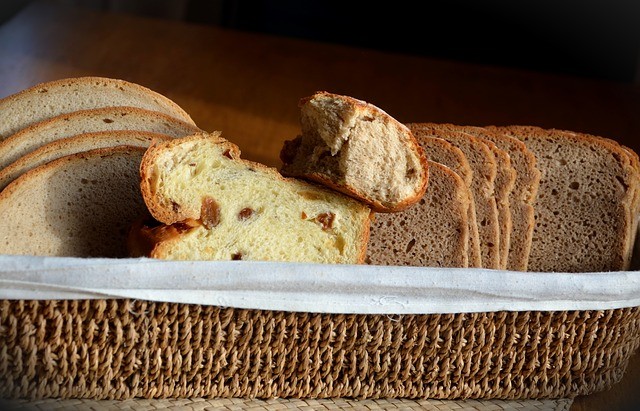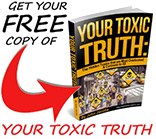Learn what are the scary ingredients you didn’t know were in your bread. Check out the article we found over at Healthy and Natural World.
Bread is a staple food in our diet and we just can’t get enough of this stuff, which is why leading fast food chains such as Subway are everywhere. You would think that you could just pick up a delicious sandwich at your convenience without having worry about a thing. But the reality is that there are some scary ingredients in our bread and many of these ingredients you didn’t know were in your bread. You may think that the bread you are eating from Subway is innocent stuff, but the pesky bread makers at the Subway HQ have been discovered to have been using a chemical called Azodicarbonamide. Oddly enough, the chemical is found in yoga mats and shoe soles. If you are thinking: “why on earth are they serving yoga mat bread?” It is because it strengthens the dough and adds elasticity. Yum.
But don’t worry, as on February 2014 Subway said the ingredient will be removed from their bread. In a statement they said:
“Even though this ingredient is safe, we are removing it from Subway bread. This process began last year and is nearly completed — we have already developed an improved bread formula, conducted extensive performance and consumer testing on it, and pending final government approvals we should complete the entire conversion process within the coming weeks. Azodicarbonamide is “an extremely common bread ingredient that is fully approved and recognized as safe by the FDA.”
However, as confident as Subway sound that the chemical is safe, according to the Center for Science in the Public Interest, it has not been tested thoroughly enough.
But it’s not just Subway that’s guilty of using Azodicarbonamide. Various grocery stores and restaurant breads also contain this chemical, including McDonald’s, Starbucks and Arby’s.
Top ingredients to avoid in commercial bread
Back in the day, our grandparents enjoyed a much purer diet free from the additives found in commercial breads, and they were healthier because of it. Nowadays, a lot of food available to us is filled with artificial ingredients that we don’t know much about. Here I list common ingredients found in bread that you are best to steer clear of.
1. High Fructose Corn Syrup(HFCS)
You won’t be shocked to see that high fructose corn syrup in bread is a naughty ingredient. The sweetener – often made from genetically modified corn – is used by food manufactures because it is less expensive than sucrose (table sugar).
2. Butylated Hydroxyanisole (BHA)
This chemical is used as a preservative in breads. It’s no wonder that commercial bread manufacturers love this one. BHA prevents breads from going rancid too soon. However, only if we knew that according to the U.S. Department of Health and Human Services 2011 Report on Carcinogens, BHA is “reasonably anticipated to be a human carcinogen.” This ingredient is also listed on California’s list of chemicals known to the state to cause cancer. It’s funny that the FDA still approves it.
3. Potassium Bromate
Don’t be fooled by the word ‘potassium.’ You’d be better off eating a banana than consuming this chemical in your daily bread. Potassium bromate is an oxidizing agent used to “mature” bread flour, which strengthen the dough and makes it rise and boosts volume. Potassium bromate is classified as a category 2B carcinogen (possibly carcinogenic to humans) by the International Agency for Research on Cancer (IARC). Although banned for use in foods by many countries, in the USA Potassium bromate is typically used as a flour improver
4. Partially Hydrogenated Oil
It is common knowledge now that trans fats are bad for our heart. The FDA knows this and requires bread manufacturers to list the ingredient on their nutritional information labels. However, if a food contains less than 0.5 grams of trans fat per serving, the nutrition label can legally say the product contains no trans fats all at all… I don’t know about you but many people tend to have more than one measly piece of bread at a time. Therefore they may consume an amount of trans fats that should be specified on the bread label. Trans fats are of no benefit to the consumer, except the fact that they extend the bread’s shelf life. Personally, I would prefer my bread to go moldy quicker and my heart to live longer.
Tips for buying the best bread
Just because the name of the bread on the package sounds super-healthy, it doesn’t mean the bread actually is. So read carefully the nutritional label and look for the less amount of ingredients in the bread as possible. Make sure that you recognize, and can pronounce the ingredients. If you see a list of various chemicals, just because you don’t recognize an ingredient name doesn’t mean it’s harmful, but still, for optimal health, it’s best to choose whole, homemade or bakery-fresh breads that you can easily identify their ingredients (flour, yeast, water, salt) as those common to bread and you won’t have to worry about additives.
If you’re concerned about GMO ingredients, look for the term “100 percent organic” on the label. This assures that every ingredient in the product is organic and not genetically modified.
Finally, instead of purchasing bread, why not make it yourself? Yes it requires more time and effort, but then at least you know exactly what ingredients you are putting in your body.
Next Article: Make your Own Grain Free Bread Made With Coconut Flour
Read full article: 8 Scary Ingredients You Didn’t Know Were In Your Bread







David Sage
Nov 29. 2015
Lol
Gary Foxley
Nov 29. 2015
Made super market bread for 35 years. Never used yoga mats but always added some sawdust to the high fiber breads and muffins.
Debbie Howerton
Jun 29. 2017
BS
Terrie Ward
Jun 29. 2017
Thank you.